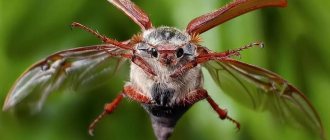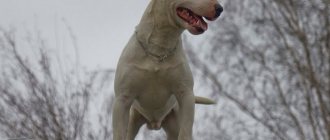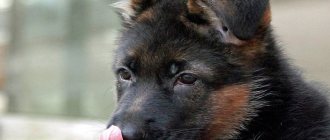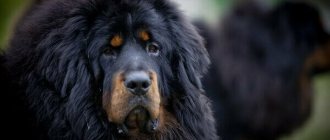- A beetle similar to a cockchafer
Khrushchev's cherry pond is humming over the cherries. T. Shevchenko.
Familiar to many from the imperishable poetry of Taras Shevchenko, the Khrushchev, also known as the May beetle, is especially well known to gardeners and gardeners, and not from the best side, since it is one of the most dangerous agricultural pests. This insect got its name due to its habit of appearing in the spring and beginning its active activity in May. What are the habits of the cockchafer, what is its appearance, how to fight it, read about all this below.
Description, structure, characteristics
What does a cockchafer look like? The May beetle is an arthropod insect and belongs to the order Coleoptera, the family Platinaceae, and the genus of May beetles.
As for insects, the cockchafer is quite large, some individuals reach 17.5-31.5 mm in length. The body of the Khrushchev is wide and convex, elongated oval in shape, with a black or red-brown color. Also, the body of the cockchafer is protected by a chitinous shell; it itself consists of a head, chest and abdomen. In turn, the insect’s thorax consists of three segments, and the abdomen of eight.
The wings of the cockchafer are protected by rear elytra of a reddish-brown or yellow-brown color. The beetle's head is small and retracted into the elytra; it is dark in color, although there are beetles with a greenish tint on the head.
The cockchafer is also a very hairy creature; it is almost completely covered with hairs of different lengths, thicknesses and colors. Typically, the colors of the cockchafer's hair are white, yellow or gray, and, interestingly, in some beetles the vegetation can be so dense that it even hides the main color.
The longest hairs, collected in longitudinal stripes, adorn the head of the cockchafer. The elytra have long, single protruding hairs, while the chest is strewn with yellow hairs.
The beetle's abdomen, consisting of eight segments, also has small openings - spiracles, which play an important role in the life of the insect; it is through them that air enters the respiratory tubes, trachea and is distributed throughout the beetle's body.
The cockchafer has three pairs of jointed limbs, which also have hairs, especially long on the thighs. The first pair of beetle legs comes from the anterior thorax, the second pair from the mesothorax, and the third from the metathorax. The tibiae of the front legs have 2-3 teeth.
The eyes of the cockchafer are convex, they have a complex structure (each complex eye consists of several thousand simple ocelli), and allows them to see at a wide viewing angle.
The antennae of the cockchafer perform an important olfactory function for the insect; they consist of ten segments, with the third segment being the longest. The flagella of the antennae are strongly curved; in general, they somewhat resemble a club or a fan. In males, such a “mace” is more curved and larger in size than in females.
As for the oral apparatus, cockchafers have a gnawing type, thanks to which they easily eat plant shoots. Along the edges of the mouth there are three pairs of oral appendages: the first of them is the stingers, the second is the lower jaw, and the third forms the lower lip. The upper lip, which is a small plate, covers the movable oral appendages from above. When eating, the beetle uses both the lower and upper jaws, and uses the palps to move food closer to the mouth.
The chitinous shield of the cockchafer has a semi-oval shape, it is large, smooth and glossy.
External structure
Khrushchi are no different from other representatives of Coleoptera. Therefore, the structure of cockchafers is similar to other insects from this order:
- the head, on which the eyes, antennae and mouthparts are located;
- thoracic region of 3 segments, a pair of legs is attached to each segment;
- abdomen of 8 segments.
All functions of insect movement are performed by the thoracic region. There are 3 pairs of legs attached to it below, and 2 pairs of wings on top.
Interesting!
The rigid elytra are actually a modified first pair of wings. The real pair of cockchafer wings is quite small and has difficulty lifting its host into the air. The flight occurs with a low humming sound. Raised elytra do not add aerodynamics to the cockchafer. The flight is clumsy and the speed is low. Therefore, myths about the accumulation of electricity by the cockchafer in flight did not arise. Since the cockchafer flies poorly, it rises into the air to find a pair for mating or to fly to the nearest tasty plant.
Habitats
May beetles live over a wide geographic range: in Europe, Asia, North America and even on some islands of Oceania. Of course, they exist in Ukraine as well. One way or another, most species of cockchafers live in a temperate climate zone, although there are species living in the hot tropics.
As habitats, beetles, also known as beetles, prefer wooded areas, near rivers, where there is not only food, but also loose sand and soil. But in places with clay soil there are no cockchafers, for the reason that their females simply cannot dig a tunnel and lay eggs in such soil.
Population and species status
Photo: Maybug
The genus of May beetles has a stable high population. This is due to the fertility of insects, their survival in different weather conditions, and the presence of a large amount of suitable food. The appearance of these beetles does not cause concern among scientists; the risk of their extinction is extremely low, despite the fact that people annually use various means to destroy the dangerous pest.
The population of the cockchafer in each territory of its natural habitat is quite unstable. There are periods when the number of these insects increases to critical levels. In this case, a person has to exterminate pests, because the latter can cause enormous damage to crop yields. The beetle reproduces at a fairly fast pace. One female is capable of laying about seventy eggs. Within thirty days, voracious larvae emerge from the eggs. From the first days they begin to eat the roots of plants, and their appetite grows every year.
The May beetle is a prominent representative of lamellar insects. These beetles are distinguished by their large size, bright color, determination and high fertility. May beetles are widespread throughout the planet, with the exception of the northern, cold regions. They appear with the first flowering of trees and are found in large numbers in orchards, mixed and coniferous forests. This animal is a dangerous pest. It causes great damage to crops every year. For this reason, gardeners and farmers are forced to combat the population of these insects using a variety of methods.
Tags:
- Coleopterida
- Melolonthini
- Panarthropoda
- Scarabaeiformia Crowson
- Bilaterally symmetrical
- Coleoptera
- Animals of Belarus
- Animals of Eurasia
- Animals of India
- Animals of Indochina
- Animals of Iran
- Animals of the Caucasus
- Animals of Kazakhstan
- Animals of China
- Animals of the forest
- Animals starting with the letter Z
- Animals starting with the letter M
- Animals of the fields
- Animals of Russia
- Animals of Syria
- Animals of the Subtropical Zone of the Northern Hemisphere
- Animals of the Subequatorial Belt of the Northern Hemisphere
- Animals of Tibet
- Animals of Ukraine
- Animals of the Temperate Zone of the Northern Hemisphere
- Animals of the Philippines
- Animals of Japan
- Beetles
- Winged insects
- Shedding
- May beetles
- Insects with complete metamorphosis
- New-winged insects
- Protostomes
- Lamellaridae
- Herbivorous beetles
- Scarabaeoides
- Tracheal breathing
- Khrushchi
- Arthropods
- Hexapods
- Eumetazoans
Lifestyle
In the spring, when green leaves begin to bloom on the trees, male cockchafers appear. After 7-10 days, females join them. Many species of cockchafers are especially active at night and in the evening. Some beetles fly actively even in the morning hours before dawn; sometimes they are attracted to artificial light sources. But during the day, especially after eating, the beetles, on the contrary, slow down their activity.
During its short terrestrial life of 30-40 days, the cockchafer nevertheless actively flies; in search of food, it can fly up to 20 km in a day, developing a speed of 8-11 km per hour. During the flight, the Khrushchevs buzz loudly; it is this feature that was aptly noted by the great Ukrainian poet T. Shevchenko.
Features of character and lifestyle
Photo: Western Khrushchev
In the spring, at the end of April or beginning of May, when all the trees are covered with young leaves, males crawl out of the ground en masse. A week later, females join them so that without delay they can have a good meal with fresh, juicy greens and begin mating, and then other concerns about the future generation.
The size of the cockchafer varies during its short life (4-7 weeks) and can reach 38 mm. Khrushchev's body shape is oval, and its weight is up to 10 g. The color of all parts of their body depends on the species and habitat. Thus, beetles with darker colors live in dense forests, and beetles with lighter colors live in undergrowth, on the edges and in fields.
Despite their rather large dimensions, beetles are very masterful in flight and are able to easily cover distances of up to 20 km, at a speed of approximately 30 m in 1 minute. During flight they tend to make a loud noise.
Khrushchi tend to be most active in the evening, when the sun has already set, but has not yet completely darkened. Some individuals can fly all night, right up until dawn, bumping into artificial light sources every now and then. During the day, especially after a heavy meal, the beetles become lethargic and doze until dark. As evening approaches, everything repeats itself.
Interesting fact: The determination of cockchafers is legendary. After all, if a beetle has set a goal for itself, it will strive for it in spite of everything.
Types, photos and names
To date, zoologists know 63 species of cockchafers; below we will describe the most interesting of them.
Eastern May Khrushchev
He is also the eastern May beetle, he is also the wild chestnut beetle. This species is characterized by pronounced sexual dimorphism; females are significantly smaller than males: 20-29 mm long in males versus 10-15 mm in females. It has a variable color, although in general brownish and red colors predominate. Also distinguished by its black antennae. The Oriental cockchafer is very numerous in Europe and Asia.
Western May Khrushchev
Also known as the Western cockchafer. It is longer in size than its eastern relative, with a strongly convex body. They are almost the same in size, but differ in some habits and details of appearance, for example, the Western Khrushchev in the spring appears 10 days later than the Eastern one, it is more thermophilic and likes to settle in fields. His antennae are not black, but light brown or reddish-brown. Lives in many European countries. In Ukraine, many beetles of this species live in the Odessa and Kherson regions, in the lower reaches of the Dniester.
Caucasian May Khrushchev
It is a representative of a rare species of May beetles. Currently it lives exclusively in the southwestern part of Germany and Austria. It differs from other species in having a short, more rounded pygidium. They also have whitish scales on the elytra, which sometimes almost completely hide their main color.
The place of the cockchafer in the insect kingdom
The second name of the hero of today's conversation is May Khrushchev. The Coleoptera insect belongs to the Lamellaridae family, the Khrushchi subfamily, of which there are more than 5.7 thousand species on the planet.
Despite its impressive appearance, it is a pest that poses the greatest threat to deciduous and mixed forests, but it does not disdain cultivated fruit and berry trees. Even more dangerous is the larva, which is popularly called hrobak, furrowworm. Depending on the habitat of the cockchafer, it, gnawing the root system, destroys young forest plantations, grains, garden crops, and seedlings.
The distribution range of various types of Khrushchev is Europe and Asia, wherever forests grow in abundance. In Russia, the insect is found from Arkhangelsk to Yakutsk, but prefers the center and south of the European part, Siberia.
Reproduction and development. Life cycle.
Development with complete transformation is typical for this insect. The life cycle of Khrushchev lasts from three to five years and includes the following stages:
The breeding season for beetles occurs at the end of May; after mating, the female buries herself in the ground, lays a clutch of eggs there (usually 20-30 eggs in one clutch), then mates again and lays a clutch again. During her short adult life, a female cockchafer manages to make 3-4 clutches.
This is what chafer eggs look like; they are from 1.5 to 2.5 mm in diameter. After 30-40 days, the larvae hatch from them. The larvae of the cockchafer have a thick, curved body with three pairs of limbs and a large, round head. The larva lives and winters in the ground for 3-4 years, during the winter cold, burrowing to a depth of 1-1.5 meters, and rising higher with the onset of spring.
If in the first year it feeds on humus and grass roots, then in the second year it begins to eat the thicker roots of plants, thereby causing great harm. In search of food, beetle larvae crawl up to 30 cm.
Then, after the third or fourth wintering, closer to autumn, the larvae pupate. During this period, the larva burrows deeper into the ground and turns into a pupa, being in a special chamber - the pupal cradle. Gradually she begins to resemble an adult. The pupal phase lasts 30-45 days; at the end of this period, an adult cockchafer emerges from the pupa, which remains in its pupal cradle for some time and only at the end of April, beginning of May begins to emerge to the surface, with females emerging for 7-10 days later than males.
Social structure and reproduction
Photo: May beetle in spring
Khrushchev is a type of arthropod. It reproduces sexually. Representatives of this genus have females and males. Some time after mating, the female Khrushchev lays eggs. To do this, she has to dig a tunnel in the soil. The depth of the tunnel must be at least thirty centimeters. Otherwise, the entire egg will die. During her life, the female is capable of laying up to seventy eggs.
After the eggs have been laid, the female cockchafer immediately dies. Until this moment, the males who fertilized these females die. After about a month and a half, larvae begin to emerge from the eggs. They will live in the soil for four years. They are completely different from adult beetles. The larvae are remarkably adapted to life in the ground. They have no eyes, their body is painted white, and their worm-like shape allows the larva to easily move through the soil in search of food.
Beetle larvae have very strong upper jaws. With their help, the animal can make tunnels for itself and gnaw through the hard roots of plants. However, the larvae do not acquire such strength immediately. In the first year of their life, they are not able to gnaw or eat hard root systems. During this time, they feed on various plant foods. Only a year and a half after birth the larva begins to eat root crops and roots.
At the end of the last year, the larva turns into a pupa. It closely resembles an adult, but does not yet have a hard shell. Over time, the pupa develops legs, wings, and other important organs that an adult cockchafer has. The pupa finally becomes a beetle after two months.
Fighting the cockchafer
At all stages of its existence, the cockchafer is a dangerous pest for agricultural crops; beetle larvae eat the roots of plants, causing drying and death of the latter; adult individuals damage vegetation by eating leaves and shoots. For this reason, to effectively combat them, comprehensive measures are needed, aimed at both the destruction of larvae and adults. The most effective against them are special insecticides:
- Bazudin is a combined remedy against cockchafers; it kills them immediately after cultivating the soil.
- Anti-Khrushchev - the advantage of this insecticide, in addition to its effectiveness against Khrushchev, is also low toxicity.
- Zemlin is an effective remedy against cockchafer larvae; it is introduced into the ground along with planting material.
The fight against cockchafers with folk remedies also takes place, for this you need:
- Do regular digging of the earth and remove the larvae by hand.
- Conduct autumn digging with the addition of Bleach or bleach to the soil.
- Treat the soil and foliage of fruit trees with an infusion of onion peels.
- Plant white creeping clover in the garden; its roots, which accumulate nitrogen, can repel insects.
- Get birdhouses: starlings, thrushes and other birds will happily eat cockchafers in your area.
- Moles and hedgehogs can also be your allies in the fight against these harmful insects, so if you find a mole hole in your area, do not rush to bury it, just as you should not scare away hedgehogs from the garden.
What do the cockchafer and its larvae eat?
The diet of an adult cockchafer is based on young shoots, leaves, flowers and ovaries of cultivated and wild trees and shrubs. Favorite fruit plants of insects are apple, cherry, sweet cherry, plum, sea buckthorn, gooseberry and black currant. May beetles happily eat leaves of maple, oak, rowan, poplar, birch, chestnut, willow, aspen, hazel, beech, and linden.
Photo by: jp hamon
May beetle larvae growing in the ground are very voracious and cause more serious damage than adult insects. In the first year of life, they are quite harmless, content with humus and grass rhizomes. But after a year, the cockchafer larva begins to feed on the roots of young trees, fruit and berry crops.
A special delicacy for the larvae are the roots of root crops: carrots, beets, onions, potatoes, as well as corn and strawberries, and the roots of young conifers, especially pine and larch.
Photo by: Danny Steaven
Interesting Facts
- The most mysterious and surprising thing is their ability to fly; the fact is that, according to the laws of aerodynamics, they simply should not fly. Nevertheless, beetles fly contrary to all aerodynamic laws; perhaps in the future zoologists and technicians will be able to penetrate the secret of the flight of these insects.
- May beetles are unusually very purposeful creatures; having set a goal, he will go to it no matter what.
- In Anderson's fairy tale "Thumbelina", the cockchafer was one of the contenders for Thumbelina's hand and heart.
Origin of the species and description
Photo: Maybug
Khrushchev is a fairly large insect. Some representatives of its genus reach thirty millimeters in length, have a characteristic wide body, black or red-brown body color. May beetles are also called beetles, and in Latin they are called Melolontha. These insects belong to the order Coleoptera and are part of the huge family Lamelidae. May beetles founded their own genus of the same name.
Video: Maybug
The Khrushchev population has experienced great leaps at different times. There were both drops and rises in the number of pests. The population was at its highest in the fifties. Then the beetles caused enormous damage to agricultural land and gardens. For this reason, farmers began to actively use pesticides to cultivate their lands. At first this significantly reduced the number of pests, then completely exterminated them. The genus of cockchafers was able to restore a high level of its population only after the eighties, when the use of certain types of pesticides was prohibited.
May beetles are amazing creatures. They have such an unusual quality as determination. The insect will fly to its intended target no matter what.
The genus of May beetles is quite large. It has twenty-four species. These are Melolontha aceris, Melolontha afflicta, Melolontha anita and many others. Nine of the species live in the territory of modern Russia. In many ways, the behavior and abilities of such beetles are similar to the behavior of ordinary wasps and honey bees. These insects also know how to remember the area and navigate it perfectly. But a significant difference from bees and wasps is the harm caused by beetles.
Links and useful literature on the topic
- Johan Christian Fabricius. Systema entomologiae sistens insectorum classes, ordines genera, species, adjectis synonymis, locis, descriptionibus, observationibus. - Flensburg, Lipsia, 1775. - P. 31.
- May bug // Encyclopedic Dictionary of Brockhaus and Efron: in 86 volumes (82 volumes and 4 additional). - St. Petersburg, 1890-1907.
- Medvedev S.I. Scarabaeidae // Key to insects of the European part of the USSR (edited by G. Bey-Bienko.) - Moscow-Leningrad, 1965
- Barton, K. Verfluchte Kreaturen: Lichtenbergs "Proben seltsamen Aberglaubens" und die Logik der Hexen- und Insektenverfolgung im "Malleus Maleficarum", in Joost, U.; Neumann, A. (eds): Lichtenberg-Jahrbuch 2004, p. 11ff, Saarbrücken 2004 (SDV Saarländische Druckerei und Verlag), ISBN 3-930843-87-0. online.
Author: Pavel Chaika, editor-in-chief of Poznavaika magazine
When writing the article, I tried to make it as interesting, useful and high-quality as possible. I would be grateful for any feedback and constructive criticism in the form of comments on the article. You can also write your wish/question/suggestion to my email [email protected] or Facebook, with respect, the author.
Author page
This article is available in English -
June Bug (Cockchafer, May Beetle, Chafer Beetle).
Natural enemies of Khrushchev
Photo: What Khrushchev looks like
It is no secret that beetles and their larvae are dangerous pests of forests, gardens, fields and vegetable gardens. During their short lives, adult beetles (imagoes) simply eat a huge number of young leaves and flower buds of fruit trees, which ultimately affects their productivity. The larvae are even more dangerous than the imago, because they live much longer - 4-5 years, and during this time, feeding exclusively on the roots of grasses and young trees, they cause considerable harm to both forestry and agriculture.
However, there is justice in nature and it is such that Khrushchev, in turn, also serves as food for many birds and animals. Thus, small mammals are not averse to eating adult beetles: hedgehogs, badgers, moles, rats, flying mice and large birds: starlings, crows, magpies, hoopoes, rooks and even owls.
Beetle larvae, rich in protein and liquid, are a favorite food for smaller forest birds. This natural factor helps both control the number of beetles and feed the birds their numerous offspring.
Another natural enemy of the May beetle larvae is the familiar ground beetle. Many consider them pests, but they eat beetle larvae (mainly the first year of life), thereby providing an invaluable service to all gardeners.











